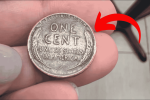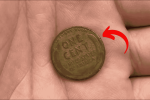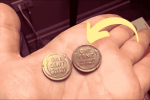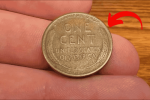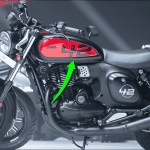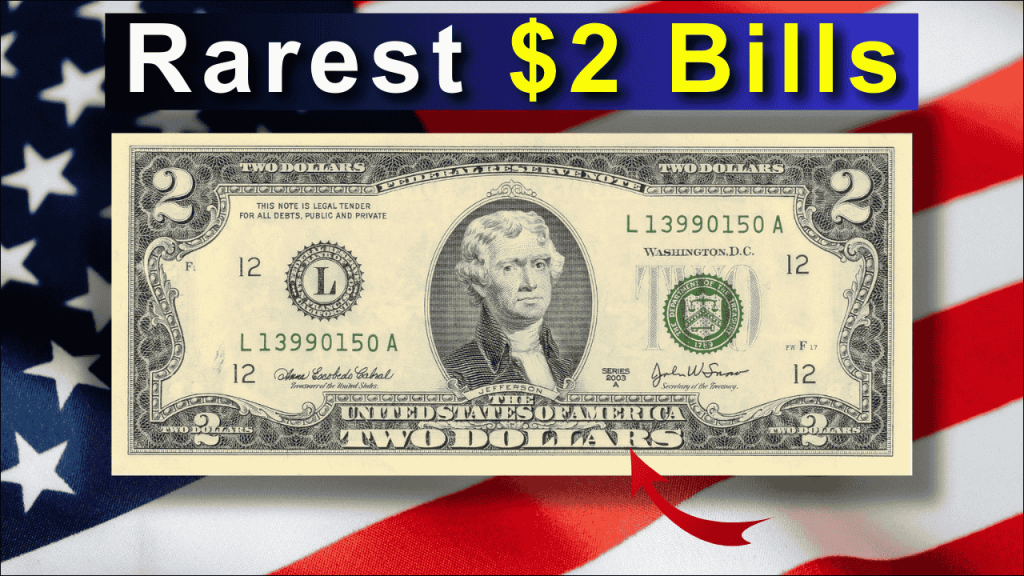
In the world of currency collecting, few items generate as much intrigue and misunderstanding as the humble $2 bill. Often mistakenly believed to be out of circulation or extremely rare, these bills actually have a rich history dating back to 1862. While most $2 bills in circulation today are worth exactly $2, certain rare specimens can be worth hundreds, thousands, or even tens of thousands of dollars to collectors. This comprehensive guide will help you identify potentially valuable $2 bills in your possession and understand what makes them special in the numismatic community.
The History of the $2 Bill
The $2 bill has had a fascinating journey through American currency history. First issued during the Civil War in 1862, the initial $2 notes featured Alexander Hamilton on the face. It wasn’t until the Series 1869 United States Notes that Thomas Jefferson’s portrait appeared, becoming the permanent face of the denomination.
Over its 160+ year history, the $2 bill has undergone several design changes and has been issued as various types of currency:
| Period | Type of Currency | Notable Features |
|---|---|---|
| 1862-1869 | United States Notes (Legal Tender) | Featured Alexander Hamilton |
| 1869-1966 | United States Notes | Thomas Jefferson portrait introduced |
| 1886-1891 | Silver Certificates | Various designs with blue seals |
| 1890-1891 | Treasury Notes | Various designs with brown or red seals |
| 1918-1966 | Federal Reserve Bank Notes | Limited issuance |
| 1976-Present | Federal Reserve Notes | Redesigned with Declaration of Independence on reverse |
After being discontinued in 1966, the $2 bill made a comeback in 1976 as a Federal Reserve Note. The redesigned bill featured the same Thomas Jefferson portrait on the front but replaced Monticello on the back with a rendition of John Trumbull’s painting of the signing of the Declaration of Independence to commemorate the U.S. Bicentennial.
Despite being actively printed and circulated, $2 bills account for less than 0.001% of all U.S. currency in circulation, with approximately 1.2 billion notes in existence.
The Most Valuable $2 Bills
Several factors determine a $2 bill’s value, including age, condition, rarity, and unique characteristics. Here are the most valuable types to look for:
Pre-1900 Large-Size Notes
The earliest and most valuable $2 bills are the large-format notes issued before currency standardization in 1928.
| Year/Series | Type | Potential Value (Uncirculated) |
|---|---|---|
| 1862 | Legal Tender Note (First $2 bill) | $5,000 – $20,000+ |
| 1869 | Rainbow Legal Tender Note | $3,000 – $15,000+ |
| 1880 | Red Seal Legal Tender Note | $1,500 – $8,000+ |
| 1890 | Treasury Note (Brown or Red Seal) | $4,500 – $15,000+ |
| 1891 | Silver Certificate | $3,000 – $12,000+ |
| 1896 | Silver Certificate (“Educational Series”) | $5,000 – $25,000+ |
The 1890 Treasury Notes with brown or red seals are particularly valuable, with uncirculated specimens potentially exceeding $4,500 in value. The 1896 “Educational Series” Silver Certificates are among the most aesthetically striking and valuable $2 bills ever produced.
Small-Size Rare Notes (Post-1928)
After 1928, U.S. currency was standardized to the smaller size we know today. Several small-size $2 bills can be quite valuable:
| Year/Series | Type | Special Characteristics | Potential Value |
|---|---|---|---|
| 1928 | Red Seal Legal Tender | First small-size $2 bill | $100 – $2,500+ |
| 1928A-G | Star Notes | Replacement notes | $300 – $3,000+ |
| 1953, 1963 | Red Seal Legal Tender | Last series of $2 Legal Tender Notes | $50 – $1,000+ |
| 1976 | First Day Issue | First day of the bicentennial series | $50 – $500+ |
| 1976 | Uncut Sheets | Uncut original sheets | $200 – $1,000+ |
| 1995 | Atlanta Notes | Low print run | $200 – $1,000+ |
Rare Error Notes
Printing errors significantly increase a $2 bill’s value. Look for these valuable errors:
| Error Type | Description | Potential Value |
|---|---|---|
| Inverted Back | The reverse design is printed upside down | $10,000+ |
| Missing Seal | Treasury seal is missing | $3,000+ |
| Missing Serial Number | One or both serial numbers absent | $2,500+ |
| Ink Smears | Significant ink smears or smudges | $100 – $1,000+ |
| Misaligned Printing | Severely off-center printing | $100 – $800+ |
| Overprint Errors | Treasury seal or serial numbers printed over another element | $500 – $2,000+ |
| Cutting Errors | Improperly cut notes | $100 – $500+ |
What Makes a $2 Bill Valuable: Key Identifiers
When examining your $2 bills, pay attention to these key value factors:
1. Age and Series
Generally, older bills are more valuable than newer ones. Pre-1900 large-size notes and early small-size series (1928) command the highest premiums. The series date appears on the face of the bill beneath Jefferson’s portrait.
2. Seal Color
The color of the Treasury seal provides important information about the type and age of the bill:
| Seal Color | Type of Note | Era |
|---|---|---|
| Brown | Treasury Notes | 1890-1891 |
| Red | United States Notes (Legal Tender) | 1862-1966 |
| Blue | Silver Certificates | 1886-1891 |
| Green | Federal Reserve Notes | 1976-Present |
Red and brown seal $2 bills are typically more valuable than green seal Federal Reserve Notes, with brown seals being the rarest.
3. Serial Numbers
Serial numbers can dramatically affect a $2 bill’s value:
| Serial Number Type | Description | Value Premium |
|---|---|---|
| Star Notes | Serial number ends with a star (★) | 2-10× face value |
| Low Serial Numbers | Serial numbers under 100 | 2-50× face value |
| Solid Serial Numbers | All digits the same (e.g., 22222222) | 5-100× face value |
| Binary Serial Numbers | Only two digits used (e.g., 10101010) | 3-50× face value |
| Ladder Serial Numbers | Sequential digits (e.g., 12345678) | 5-100× face value |
| Radar/Palindrome | Reads the same forward and backward (e.g., 13566531) | 3-50× face value |
| Repeater | Pattern repeats (e.g., 12341234) | 3-30× face value |
Star notes are replacement notes printed when the original note had defects. They feature a star symbol at the end of the serial number instead of a letter and are produced in much smaller quantities than regular notes.
4. Condition
Condition is critical when determining a $2 bill’s value:
| Grade | Description | Value Impact |
|---|---|---|
| Poor | Heavily worn, may have tears or pieces missing | Minimal premium |
| Good | Visible wear, may have creases or soiling | Slight premium |
| Very Good | Less wear, clearer details | Moderate premium |
| Fine | Light wear, all details clear | Good premium |
| Very Fine | Very light wear, crisp appearance | Strong premium |
| Extremely Fine | Minimal wear, nearly perfect appearance | Excellent premium |
| Uncirculated | No wear, never been in circulation | Maximum premium |
Professional grading services like PCGS Currency and PMG use a 70-point scale, with higher numbers indicating better condition.
How to Check Your $2 Bills
Follow this step-by-step process to assess whether your $2 bills might be valuable:
Step 1: Identify the Series
Look for the series year near the bottom of the portrait on the front of the bill. Pre-1928 large-size notes and early small-size series (1928-1963) are generally more valuable.
Step 2: Check the Seal Color
Examine the Treasury seal to determine the type of note:
- Brown seal: 1890-1891 Treasury Note (very valuable)
- Red seal: 1862-1966 United States Note (potentially valuable)
- Blue seal: 1886-1891 Silver Certificate (very valuable)
- Green seal: 1976-Present Federal Reserve Note (generally common)
Step 3: Examine the Serial Number
Look for special serial number patterns that collectors prize:
- Star notes (ending with a star symbol)
- Low numbers (especially under 100)
- Solid numbers (all the same digit)
- Ladders (sequential digits)
- Radars/palindromes (reading the same forward and backward)
- Repeaters (repeating patterns)
Step 4: Assess the Condition
Evaluate the note’s physical condition:
- Are there folds, creases, or tears?
- Is the paper crisp or soft?
- Are the corners sharp or rounded?
- Is there any discoloration or staining?
Step 5: Look for Errors
Inspect the bill carefully for printing errors:
- Misaligned or missing elements
- Ink smears or blank areas
- Cutting errors
- Inverted or misplaced seals or serial numbers
Authentication and Valuation Resources
If you believe you have a valuable $2 bill, consider these resources for authentication and valuation:
Official Government Resources
- Bureau of Engraving and Printing – Official information about U.S. currency
- U.S. Currency Education Program – Educational resources about U.S. currency features
- National Numismatic Collection – Smithsonian’s currency collection
Professional Authentication Services
- Professional Currency Dealers Association (PCDA)
- Paper Money Guaranty (PMG)
- Professional Coin Grading Service (PCGS) Currency
Online Valuation Tools
- Star Note Lookup – Check rarity of star notes
- Fancy Serial Number Checker – Identify collectible serial numbers
- U.S. Currency Auctions – Current market values
Common Misconceptions About $2 Bills
Several myths circulate about $2 bills that can lead to confusion:
- Myth: $2 bills are no longer printed. Reality: The Bureau of Engraving and Printing continues to print $2 bills, with the most recent series being 2017A.
- Myth: All $2 bills are rare and valuable. Reality: Modern $2 bills (1976-present) are typically worth face value unless they have special characteristics.
- Myth: $2 bills are not legal tender. Reality: All $2 bills remain legal currency, regardless of age or series.
- Myth: “Collectible” or “enhanced” $2 bills sold by private companies are valuable. Reality: These are regular $2 bills with unauthorized additions like colorization or overlays and have minimal premium value.
Protecting and Preserving Valuable $2 Bills
If you’ve identified a potentially valuable $2 bill, proper handling and storage are essential:
- Handle minimally – Use clean, dry hands or cotton gloves
- Store properly – Use archival-quality holders, not PVC materials
- Avoid cleaning – Never wash, iron, or attempt to repair bills
- Control environment – Store in cool, dry conditions away from direct light
- Consider professional grading – For high-value notes, professional authentication provides protection and documentation
Frequently Asked Questions
Are $2 bills still being printed?
Yes, the Bureau of Engraving and Printing continues to produce $2 bills, with the most recent series being 2017A.
How can I tell if my $2 bill is valuable?
Check the series year, seal color, serial number patterns, condition, and look for printing errors—older bills with red or brown seals, star serial numbers, or uncirculated condition are most likely to be valuable.
Where can I sell a valuable $2 bill?
Rare currency dealers, auction houses specializing in numismatics, and online marketplaces catering to collectors are the best venues for selling valuable notes.
Conclusion
While most $2 bills in circulation today are worth only their face value, certain rare specimens can be genuine hidden treasures. By understanding what features make a $2 bill valuable—age, condition, seal color, serial numbers, and errors—you can determine whether that $2 bill tucked away in your drawer might be worth significantly more than its face value. Whether you’re a seasoned collector or simply curious about the potential value of a $2 bill that’s come into your possession, this knowledge empowers you to identify those special notes that might truly be worth a fortune.
